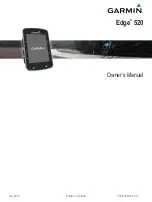
others. These groups are shown in the lower illustration.
As can be seen in the illustration, rowing activates the upper and
lower body to the same extent. In the legs, rowing exercises the
extensors (1), the flexors (2) and the shin and calf muscles (5, 4).
The movement of the hips also calls on the seat (gluteus) muscles
(3).
In the torso region, rowing calls primarily upon the latissimus (6)
and the erectors (8), but also on the trapezius (7), the deltoid (9)
and the arm extensor muscles (10).
Planning and controlling your rowing
The basis for planning your course of exercise should be your ac-
tual state of fitness. Your family doctor can put you through an en-
durance test to determine your physical performance. The results
of the test should be
used to plan your exercise programme. If you do not go through
an endurance test, you should avoid excessive exercising stresses
at all costs. The following principle should be follow in your plan-
ning; endurance training can be controlled as much by the extent
of effort as by the level of effort and the intensity.
Exercise intensity
The effort intensity when rowing can be determined by checking
the pulse. The maximum pulse rate per minute is equivalent to a
pulse of 200 minus age. This rate should, however, never be ex-
ceeded during exercise. The optimum rate is given by the rule of
thumb of:
This means that a 50-year-old person should arrange his/her en-
durance exercising around a pulse at 130. Such a calculation is
considered very favourable by numerous experts. The intensity of
the rowing exercises can be varied on the one hand by altering
the number of strokes per minute, and on the other by altering the
resistance of the “oars”.You can adjust 12 steps of rowing resi-
stance at the adjusting rings of the oil pressure damping cylinders.
As a beginner, on principle select a low intensity, i.e. the stroke
frequency should be below 20 strokes per minute and the dam-
ping cylinders' resistance should be adjusted at the lowest step.
Beginners should therefore avoid exercising at high stroke rates or
at high resistance levels. The optimum stroke rate and level of re-
sistance should be determined using the recommended pulse rate,
180 minus age
1
2
3
4
5
6
7
8
9
10
• Do not train directly under strong incidence of light, e.g. neon
light, halogen light, spot light, sunlight.
• Completely avoid any vibrations and wobbling of the ear sen-
sor including cable. Always fasten the cable with the clip at
your clothes or - even better - at a headband.
With cardio pulse set
Please refer to the appropriate instructions.
Failures in the pulse display
Should there once be any problems with pulse detection, please
once again check the above mentioned points.
Check the battery voltage.
Failures in the training computer
Record the kilometres covered. In case of a strange behaviour of
the training computer remove the batteries, check the battery vol-
tage and insert the batteries again.
The stored total value of kilo-
metres covered will get lost during an exchange of batteries.
For Your Safety:
■
Before beginning your program of exercise, consult your doctor
to ensure that you are fit enough to use the equipment. Base
your program of exercise on the advice given by your doctor.
Incorrect or excessive exercise may damage your health.
The rowing machine provides all of the advantages of “real life”
rowing without the trouble or expense of “taking to the water”.
The particular boom design of the rowing machine permits a cir-
cular rowing movement coming very close to real rowing on wa-
ter. Rowing is a sport that improves not only the performance of
the cardio-vascular system, but also improves stamina and endu-
rance. The following points should be observed before commen-
cing a course of training:
Important
Before commencing a course of training, have your family doctor
check that you are fit enough to exercise with the rowing machi-
ne. The result of the medical check-up should be used as a basis
for planning the exercise programme.
The following directions are
only to be recommended to healthy persons.
The advantages of rowing
As mentioned above, rowing is an excellent way to increase the
efficiency of the cardio-vascular system. It also improves the abili-
ty to absorb oxygen. In addition, rowing is also suitable for “bur-
ning off” fat by calling up the fat reserves (in the form of fatty
acids) to be transformed into energy.
Another important advantage of rowing lies in the strengthening
of all of the body’s important muscle groups, whereby the strengt-
hening of the back and shoulder muscles can be considered es-
pecially beneficial from the orthopaedic point of view. The strengt-
hening of the back muscles can help prevent such orthopaedic
problems as are encountered all too often nowadays. Exercising
with the rowing machine is therefore a comprehensive way to
exercise. It improves endurance and strength while at the same
time not putting the joints under stress.
Which muscles are called on
The movements in the rowing exercise call on all of the body’s mu-
sclegroups. Although some are concentrated upon more than
10.0 Exercising with the rowing machine
GB










































